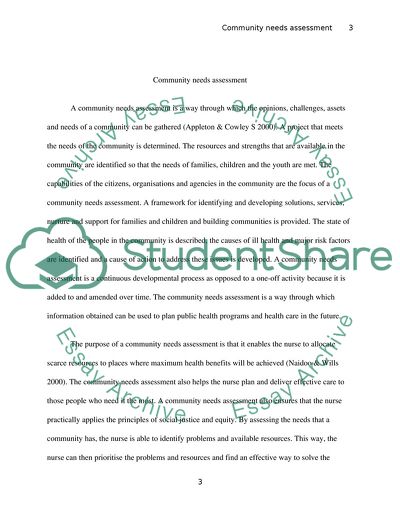Cite this document
(Community Needs Assessment Term Paper Example | Topics and Well Written Essays - 2000 words, n.d.)
Community Needs Assessment Term Paper Example | Topics and Well Written Essays - 2000 words. Retrieved from https://studentshare.org/social-science/1741186-a-community-needs-assessment
Community Needs Assessment Term Paper Example | Topics and Well Written Essays - 2000 words. Retrieved from https://studentshare.org/social-science/1741186-a-community-needs-assessment
(Community Needs Assessment Term Paper Example | Topics and Well Written Essays - 2000 Words)
Community Needs Assessment Term Paper Example | Topics and Well Written Essays - 2000 Words. https://studentshare.org/social-science/1741186-a-community-needs-assessment.
Community Needs Assessment Term Paper Example | Topics and Well Written Essays - 2000 Words. https://studentshare.org/social-science/1741186-a-community-needs-assessment.
“Community Needs Assessment Term Paper Example | Topics and Well Written Essays - 2000 Words”. https://studentshare.org/social-science/1741186-a-community-needs-assessment.


